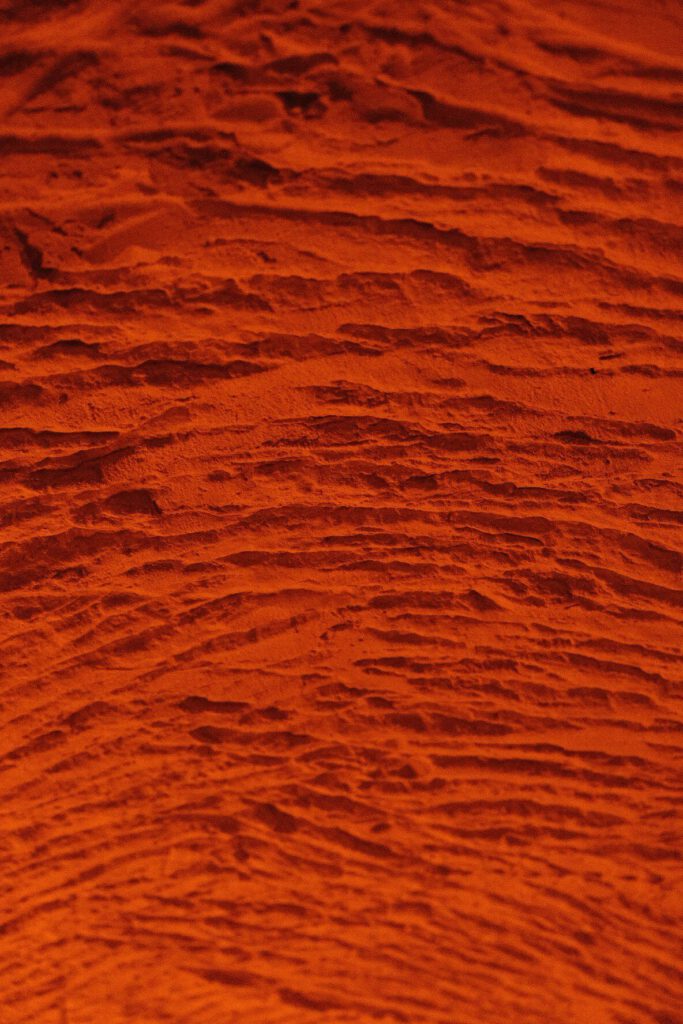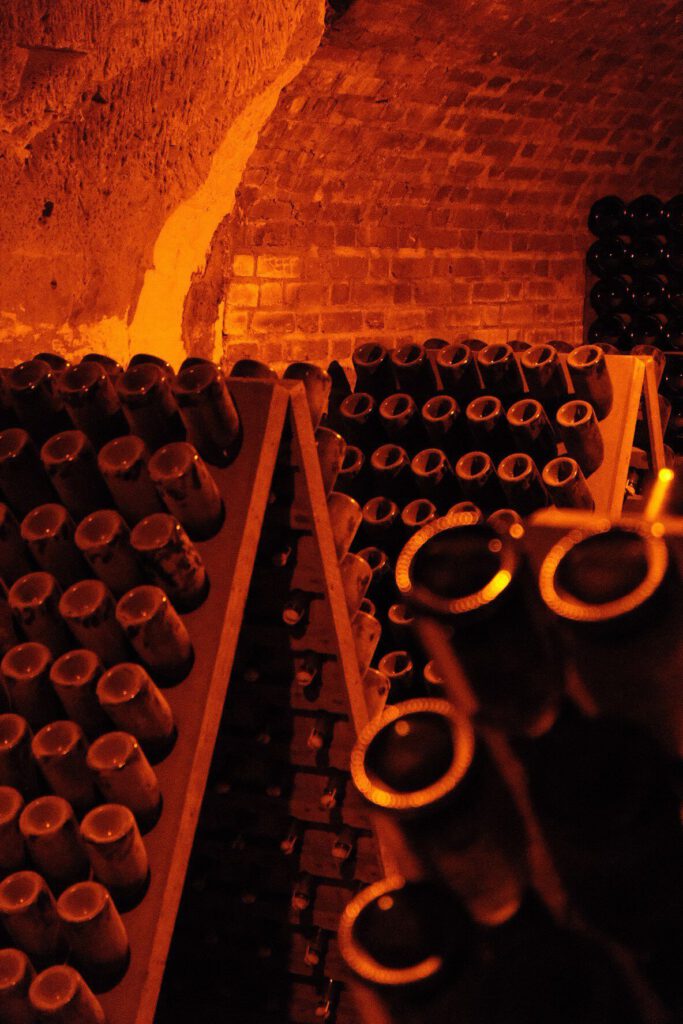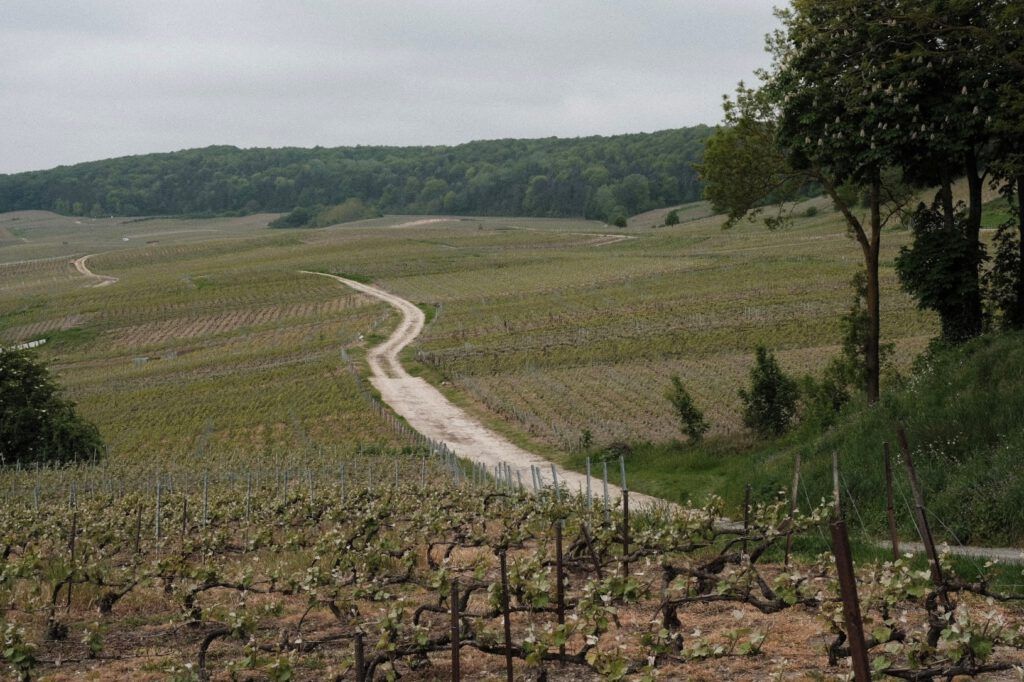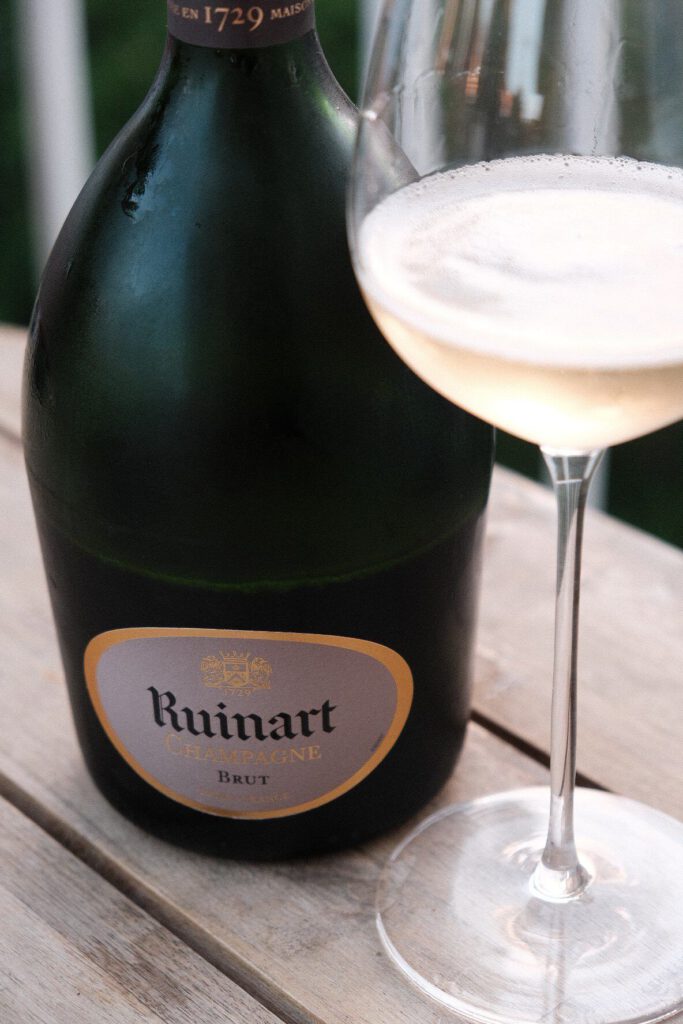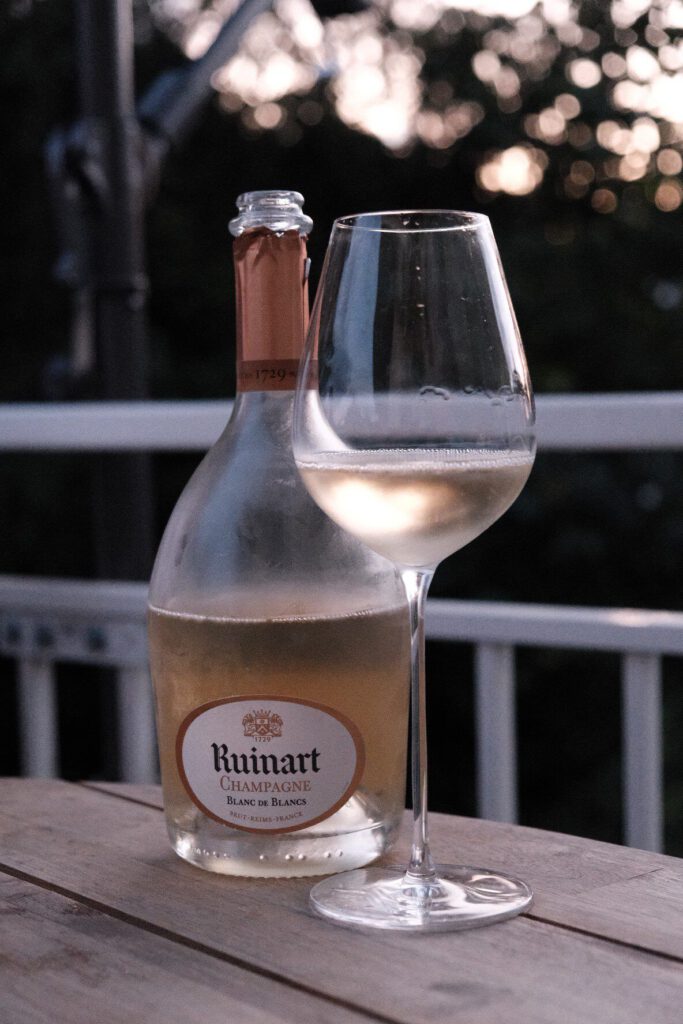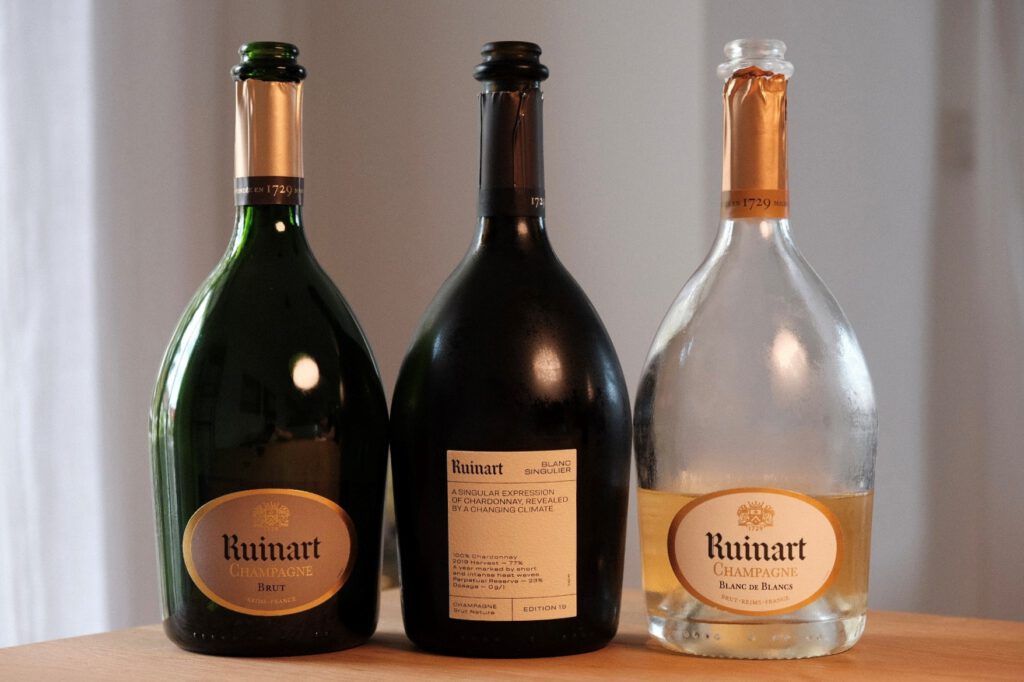Tasting notes
The Blanc Singulier Édition 19 Champagne from Ruinart impresses with a diverse, mature aroma. On the nose, citrus notes dominate initially, complemented by almond and bread aromas. Later on, orange peel and apple skin become distinctly noticeable, accompanied by hints of marzipan and a warm, spicy note.
On the palate, the champagne starts off ripe, carried by delicate bubbles, before transitioning into a round and opulent texture. Here, the warmth of the 2019 vintage is clearly evident. Flavors of ripe peach, pear, and candied lemon with a hint of velvety peels. The finish is long, spreading with considerable strength across the palate, marked by distinct warm, spicy, and nutty nuances.
A fitting placement within the Ruinart Portfolio
To better contextualize the new champagne, I also tasted the flagship of the maison, the R de Ruinart, and the Blanc de Blancs.
The R de Ruinart, a classic Champagne blend, impressed me particularly with its fine balance, effervescence, and freshness. Green apple, grapefruit zest, white and yellow blossoms combine with a flattering texture and fullness. Not too sweet, not too austere. Utterly charming and an everybody’s darling for any occasion.
The Blanc de Blancs, like the Blanc Singulier, a pure Chardonnay, impresses with its intensity. Ripe grapefruit mixes with lemon zest and bread crust. On the palate, an embracing creamy texture with soft acidity fills the mouth. Brightly spicy, fruity with yellow fruits, and mouth-filling on the finish. In comparison, the Blanc Singulier Édition 19 offers a more intense, warmer, yet decidedly more complex aroma and texture.
